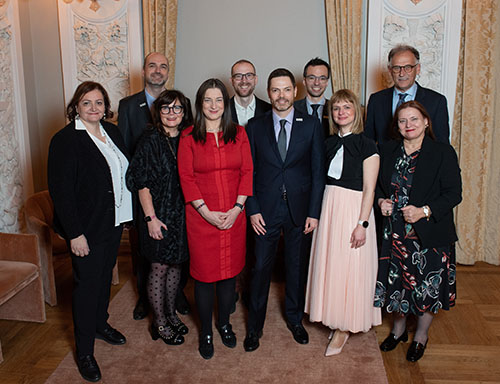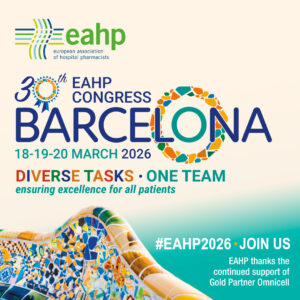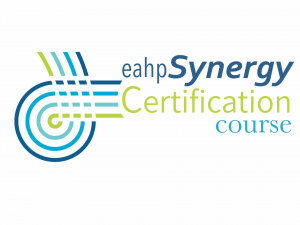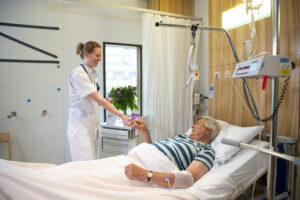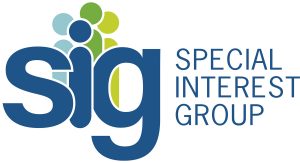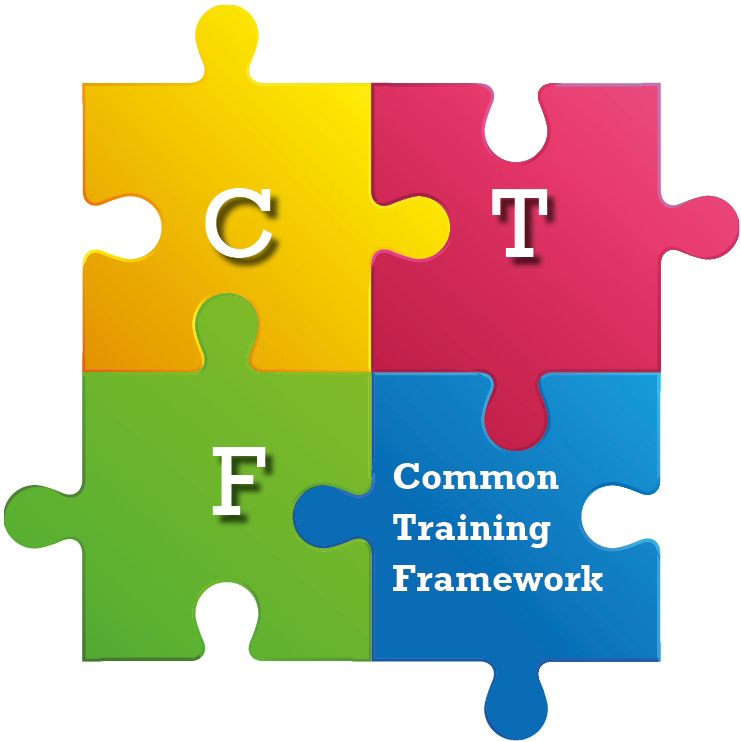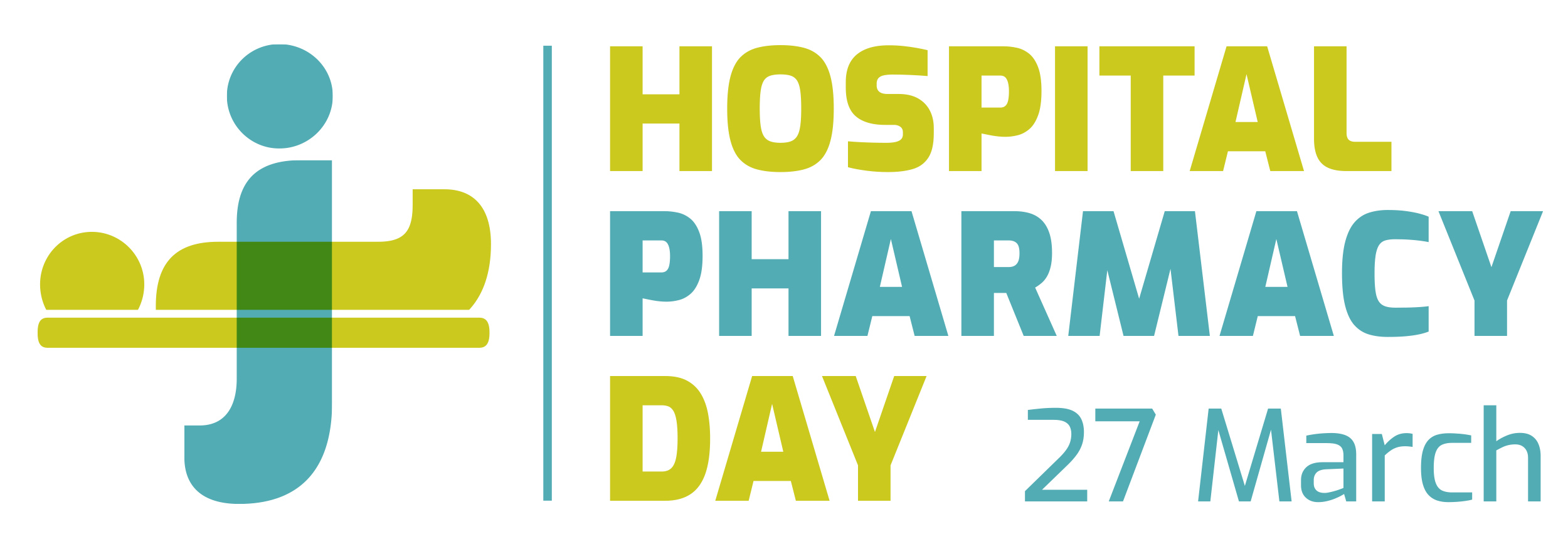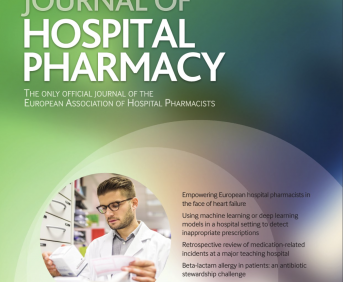DYSPHARMA: AN ITALIAN WEB-APPLICATION FOR DRUG THERAPY MANAGEMENT IN DYSPHAGIC PATIENTS (submitted in 2019)
Pdf

European Statement
Patient Safety and Quality Assurance
Author(s)
Serena Logrippo, Giulia Bonacucina, Matteo Sestili, Alessandro Caraffa, Marco Cespi, Roberta Ganzetti
Why was it done?
Dysphagia is a well-known community issue that affects primarily aged people [1]. The availability of appropriate dosage forms for dysphagic patients is essential to guarantee therapy adherence. Extemporaneous compounding of SODSs (e.g. crushing tablet or opening capsules and dispersing the obtained powder in an appropriate base or vehicle) is a common practice due to the unavailability of different dosage forms to satisfy the current needs of patient. However, compounding practice is neither risk-free nor error-free [2]. The aim of the work was to realise a web application to support HCPs in drug therapy management of dysphagic patients.
What was done?
To properly manage oral therapy in dysphagic patients, a multidisciplinary team developed an algorithm and applied it to over 8000 medicinal products available as solid oral dosage forms (SODSs). A web-based, decision-making tool was launched to support healthcare providers (HCPs) during the prescription, compounding and administration of SODFs to dysphagic patients.
How was it done?
An extensive review of the Italian pharmaceutical market database, product characteristic summaries and scientific literature were used for data collection. For each prescription drug formulated as SODF, an information sheet was elaborated and continuously updated.
What has been achieved?
DysPharma (www.dyspharma.it) is an on-line support currently available and under restyling. By registering and logging-in, it is possible to access technical content that comprises medicinal product details, drug-food interactions, extemporaneous compounding methods, and risk symbols. Medicinal products can be searched by active ingredient name, medicinal product name, and marketing authorisation.
Customised symbols are reported for: do not crush tablets or open capsules, do not split tablets, to wear personal protection devices in case of manipulation of hazardous drugs, and drug associated with dry mouth.
What next?
This decision support tool may be integrated with computerised medical records to reduce medication-prescribing and administering errors and to improve clinical outcomes of dysphagic patients.
References:
[1] Clavé, Pere, and Reza Shaker. “Dysphagia: current reality and scope of the problem.” Nature Reviews Gastroenterology & Hepatology 12.5 (2015): 259. [2] Logrippo, Serena, et al. “Oral drug therapy in elderly with dysphagia: between a rock and a hard place!” Clinical interventions in aging 12 (2017): 241.
IDENTIFICATION OF HAZARDOUS DRUGS IN EMERGENCY DEPARTMENT: DRUGS CABINET INSPECTION (submitted in 2019)
Pdf

European Statement
Patient Safety and Quality Assurance
Author(s)
Mª Antonia Meroño-Saura, María López-Morte, Taida Rodríguez-Martínez, Pilar Pacheco-López, Consuelo García-Motos
Why was it done?
The publication of the NIOSH list and its application by INSHT in Spain has changed the concept of “Hazardous drug” in terms of its handling and administration, as well as personnel training involved in its management.
What was done?
The main objective is to label every drug considered “Hazardous” and to review the medication included in the Emergency Department kit in a tertiary hospital.
How was it done?
Literature about Hazardous drugs was reviewed. All the drugs included in the Emergency Department kit belonging were identified and classified according to their level published in the NIOSH list. A kit’s review was carried out on site, as well as a Hazardous drugs’ categorisation by adequate labels.
What has been achieved?
6 out of 239 drugs included in the emergency kit were labelled as Hazardous drugs, and could be found in 9 different presentations. Regarding its risk level according to the NIOSH list; chloramphenicol, risperidone and all different presentations of phenytoin were classified as level 2. Acenocoumarol, colchicine/dicycloverine and all different presentations of valproic acid were classified as level 3.
The following incidents were detected;
– Lack of identification: 8 out of the total number of drugs presented identification errors.
– Location error: 4 out of the total number of drugs were not well located.
– Photosensitive: 56 out of the total drugs were photosensitive, of which 11 were not correctly identified or stored.
– Expired drugs: 12 drugs, whose total stock was 399 units. 51 out of the total amount were expired.
After this review, the following measures were carried out:
– Orange labelling for Hazardous drugs’ identification, regardless of their risk level.
– Misidentified drugs were re-labelled, and those that were misplaced were placed in their assigned spot.
– Photosensitive drugs were correctly identified by blue labels and properly preserved.
– Expired drugs were withdrawn.
What next?
Simplifying Hazardous drugs’ identification by a categorisation following a colour code could lead to a safer manipulation by the professionals. During the review of the kit, several incidents were detected and sorted out, which avoided possible medication-related errors. Therefore, it is necessary to establish several control measures in emergency kits in order to avoid errors and improve the safety in the use of drugs.
ONCOLOGY PHARMACISTS: EXPANDING OUTPATIENT SERVICE MODELS TO INCREASE PATIENT IMPACT AND SAFETY (submitted in 2019)
European Statement
Clinical Pharmacy Services
Author(s)
Paul Firman, Karen Whitfield, Therese Hayes
Why was it done?
The provision of outpatient oncology services by pharmacists is still limited, but this role is an emerging one. There is limited literature to date that suggests that pharmacists can add value while satisfying the needs of patients with cancer, addressing medication use and symptoms, and potentially generating revenue for the practice. The value that clinical pharmacists can bring to outpatient clinics other than oncology clinics has been highlighted extensively, providing added weight to the argument for incorporating these professionals into the cancer care model.
What was done?
The oncology pharmacy team in a tertiary referral hospital with the assistance of activity-based funding commenced an outpatient clinic allowing patients an opportunity for medication reviews, appropriate counselling of oral chemotherapy and discussion of medication side effects which was a gap within the current service.
How was it done?
In consultation with pharmacy, medical, nursing and administrative staff a working party was formed to establish the outpatient pharmacy clinic. Factors including patient cohort, appointment scheduling, clinic room availability, referral methods, and key performance indicators were discussed. The group met monthly to discuss the progression of the clinic and any barriers.
What has been achieved?
Over the first 3 months (January – March 2019) 215 patients on an average of 7.5 medications were reviewed. Within the cohort 57% of the patients were taking high risk medications (known as PINCHA medications) and 37% received counselling on new medications. There were 37 medication interventions mostly involving drug−drug interactions and medication optimisation. For succession planning, pharmacist training has also occurred.
What next?
Outpatient oncology practice is a growing area of opportunity for pharmacists to provide clinical services as part of a multidisciplinary team. This is of benefit both to the multidisciplinary team and the patient, ensuring the best possible outcomes. With the growing complexity of oncology treatments, the pharmacist’s role is vital to ensure quality use of medicines, safety and patient centred care. Training is currently being undertaken to expand the role and to ensure continuity of the service.
REVIEW OF THE HOSPITAL HIGH-ALERT MEDICATIONS LIST USING HOSPITAL AND INTERNATIONAL DATA (submitted in 2019)
Pdf

European Statement
Patient Safety and Quality Assurance
Why was it done?
In University Medical Centre Ljubljana (UMCL) a HAM list was created in 2008 and has not been significantly changed since then. Our aim was to develop a systematic strategy to review the list by including local data.
What was done?
We comprehensively updated the hospital list of high-alert medications (HAM) and identified hospital specific medications not yet present on HAM lists. We joined international HAM data supported by medication error (ME) reports and expert opinion with data from the hospital ME reporting system.
How was it done?
We analysed 390 MEs submitted to the UMCL ME reporting system from 2016 to 2018. We compared the HAM list from Institute for Safe Medication Practices (ISMP) and the UMCL HAM list. The criteria such as frequency of the reported ME, severity of harm for the patient, affected population, novelty, etc, were used to identify potential HAM. Furthermore, we calculated the probability of the ME report for the individual medications from the reported MEs and the hospital medication consumption data. The calculation was done for the medications involved in 3 or more reported MEs (Tyynismaa et al, 2017) and for the medications involved in MEs which caused harm to the patient.
What has been achieved?
The joined results from the comparison of HAM lists and reported MEs showed that several other medications could be added to the UMCL HAM list, e.g. individualised parenteral nutrition for the paediatric population, oral sedation agents for children, dialysis solutions, lidocaine IV, methadone, bupivacaine, and nusinersen. The probability-based HAM identifying method supported our previous suggestions to extend the UMCL HAM list. Additionally, the method unexpectedly revealed medications with a high probability of ME and/or harm for the patients, that are not included in any HAM list (ISMP, UMCL), such as romiplostim, parenteral iron preparations, ampicillin with sulbactam, and others.
What next?
In future we plan to develop a paediatric specific HAM list based on the same strategy; i.e. considering international suggestions and analysing paediatric ME reports in UMCL.
PHARMACEUTICAL INTERVENTIONS IN PARENTERAL NUTRITION: METHODOLOGY AND RESULTS (submitted in 2019)
Pdf

European Statement
Clinical Pharmacy Services
Author(s)
Teresa Cabeças, Sara Franco, Rita Oliveira, Maria Pereira
Why was it done?
PN is an alternative or complement in patients whose oral and/or enteral nutritional intake is inadequate/unsafe or whenever the digestive tract is not functioning or this route is contraindicated. Success in choosing the most appropriate PN depends on a specialised multidisciplinary team that can provide nutritional support that results in improved clinical outcomes and patient safety. With the decision flowchart (designed in January 2019), the hospital clinical pharmacist intervenes in the calculation of the patient’s nutritional needs and, consequently, in the counselling of the most appropriate PN bag and clinical and biochemical monitoring of the patient.
What was done?
Definition and implementation of action methodology, in a form of flow chart, for patients in need of parenteral nutrition (PN).
How was it done?
Implementation of the following therapeutic decision methodology: 1. Validation of parenteral support nutritional option according to decision flowchart; 2. Filling out a patient’s nutritional needs spreadsheet −anthropometric assessment; biochemical data; calculation of protein requirements; calculation of non-protein energy needs; calculation of total energy requirements; choosing the appropriate volume; validation of the route of administration; 3. Selection of the most suitable PN bag from the Hospital Formulary (preferably after ionic corrections); 4. PN bag suggestion to the prescribing physician; 5. Acceptance and alteration (or not) by the prescribing physician; 6. Clinical and biochemical monitoring of the patient; 7. Optimisation of nutritional therapy when applicable.
What has been achieved?
From January to August 2019 the Pharmaceutical Services intervened in all 21 PN prescriptions. In this universe, 15 were in the context of gastroenterology surgery, 5 due to infection and 1 due to non-gastrointestinal cancer disease. The intervention was not accepted in only 5 cases.
What next?
Clinical pharmacists play a key role in supporting the prescription of PN. The future is challenging, particularly in assessing patients’ outcomes and quality of life, as well as the economic and financial dimension. It will also be essential to create a Clinical Nutrition Commission that covers PN, enteral and oral feeding.
THE ACTIVITIES AND IMPACT OF A HOSPITAL-WIDE MEDICATION INITIATIVE (submitted in 2019)
European Statement
Patient Safety and Quality Assurance
Author(s)
Alice Oborne, Mark Kinirons, Virginia Aguado, Steve Wanklyn, Laura Watson, Jaymi Mistry, Duncan McRobbie, Abhiti Gulati, Emma Ritchie, David Wood, Niall Stewart-Kelcher, Adrian Hopper, Patricia Snell, Tony West
Why was it done?
Medicines are common interventions but have inherent dangers: 9% inpatient prescriptions contain errors, and medication errors occur at an estimated rate of one per patient per day [1-3]. Medication incident reporting was low, with high proportions of harmful incidents.
What was done?
Senior and junior staff collaborated to systematically improve safe medication processes and outcomes in a 1200-bedded multi-site hospital. The work aimed to reduce harm from medicines and improve medication safety culture.
How was it done?
Pharmacists, doctors, nurses and governance staff set up a Medication Safety Forum which met monthly to focus on high risk drugs, processes and patients. Published literature and international guidance were reviewed [1-3]. Twelve subgroups worked on safer opioid, insulin, anticoagulant, allergy and injectable medicine use and paediatric, elderly, critical care and peri-operative care. Subgroups published guidelines on the hospital intranet. External aviation and patient safety experts reviewed processes. Medication incident data were reported to staff monthly from June 2008. A monthly medication safety newsletter (total 68), screensaver messages, podcasts, mouse-mats, ‘safety days’, audit, training and senior staff promoted best practice. Electronic prescribing and medication administration (EPMA) with decision support was introduced in 2015.
What has been achieved?
The Medication Safety Forum met monthly 2009−2019. Medication incident reporting increased from 60 to over 400 per month (total 31330 over 11 years), whilst harmful incidents all reduced (Figure). Incidents with harm reduced from 51 to 24 in the first to last 20 months. Dose omissions reduced by 10% despite an increase in patient acuity, anticoagulant use and insulin use. The most common incident type was wrong dose, agreeing with national incident data. New guidelines included 30 for insulin, 28 anticoagulation and 19 opioid use. Medication incident reporting increased from 10th to highest in similar hospitals [3].
What next?
Multidisciplinary leadership, multimedia guidance, technology, audit and feedback in medication safety can be applied in any healthcare setting to enhance patient safety. Further system enhancements are planned.
References:
[1]National Patient Safety Agency 2004. Seven steps to patient safety
[2]Prescribing report, 2010. www.rcpLondon.ac.uk
[3]NHS Improvement organisational data reports
ALGORITHM OF SAFE AND CORRECT PREPARATION OF CHEMOTHERAPY (submitted in 2019)
Pdf

European Statement
Patient Safety and Quality Assurance
Author(s)
Marijana Fortuna, Petra Tavčar, Jure Dolenc, Monika Sonc
Why was it done?
To support us in understanding our role in the preparation of chemotherapy products. To prevent the risk of harm to patients. Recognise prescribed error in pre-documented chemotherapy protocols
What was done?
Cytostatics are carcinogenic, mutagenic and teratogenic drugs. Handling requires a number of organisational and technical systems. All products should be safely and accurately prepared with special care to ensure the highest possible product quality, correct dose, the right patient, the right medicine, the right carrier solutions and right administration, without microbiological and particle contamination. The prescription and preparation of cytostatic drugs must be closely monitored. The most important factor in achieving this is the constant training of pharmacists in pharmaceutical techniques.
How was it done?
This year started with monthly reviews and training in the following subjects by using a written algorithm. Risk to product: Drugs reconstitution negative pressure isolators, leakage/damage or defects of vials, particles, transport and storage. Risk to patient: Incorrect calculations, microbiological contamination, incorrect administration, extravasation, incorrect administration route, incorrect labelling. Risk to operators: Contamination, toxicity, equipment, gloves, cleaning, occupational exposure. All checks have been made throughout the whole of preparation process, adhering to standard operating procedures (SOP-s).
What has been achieved?
We concluded that continuing education by using a writhen algorithm is useful practice. It helps prevent automatic work, remind us to check each step in process and know how to recognise errors in chemotherapy prescriptions and preparation. In 25 cases of prescribed chemotherapy, intervention of a pharmacist was required. In 5 cases of chemotherapy preparation, pharmaceutical techniques have detected a discrepancy in the prescribed therapy.
What next?
Regardless of experience at work, it is necessary to constantly repeat how to work properly, and awareness why we are doing this.
CAPTURE DATA AND CONQUER CLOTS (submitted in 2019)
Pdf

European Statement
Patient Safety and Quality Assurance
Why was it done?
VTE is a collective term for blood clots usually in the legs or lungs. In Europe, there are 544,000 VTE-related deaths every year. VTE is responsible for more deaths than AIDS, breast cancer, prostate cancer and motor vehicle accidents combined. SVPH Pharmacy Department has been conducting annual Clinical Audits on VTE prophylaxis using a paper based system. However, the process was time consuming and limited the frequency of audit and the opportunities for identifying opportunities for improvement in compliance. SVPH has a high number of patients with high risk of VTE including Medical Oncology patients and Surgical patients. Compliance rates over preceding years were running at 75%; however, it is hoped to achieve a target of 90% compliance by 2020.
What was done?
An App was developed to collect data on venous thromboembolism (VTE) prophylaxis compliance across St Vincent’s Private Hospital (SVPH)
How was it done?
Different technologies were explored and an App developer was selected. Funding was sourced. Stakeholders were invited to get involved in the development team; this part was challenging and a lot of negotiations were had as to how the format of the App would be developed and carried forward. The next step when all the details had been finalised was launching the App.
What has been achieved?
Every month seven patients are randomly selected for audit and an auditor (in SVPH a pharmacist) inputs the data on the App which the lead auditor analysis. At SVPH compliance has increased from 75% prior to the app, to post implementation of the App where monthly VTE audits were conducted on all inpatient wards. The results are 92% compliance with VTE prophylaxis for 2018, and for 2019 up to Sept 2019 96% compliance.
What next?
It is hoped that this App will be a useful tool that will help SVPH and other hospitals to achieve a higher compliance with VTE prophylaxis guidelines and help prevent clots in patients. This App can be customised to individual hospital requirements. Technology has been shown to assist with clinical audit and will be used in various projects to make auditing easier and faster and therefore help healthcare workers to provide a better service to patients.
BUILDING THE FOUNDATIONS OF A MEDICATION SAFETY PROGRAMME IN AN ACUTE HOSPITAL (submitted in 2019)
Pdf

European Statement
Patient Safety and Quality Assurance
Author(s)
Bernie Love, Tracy McFadden, Patrick Martin, Val Connolly, Deirdre Brennan, Michelle Griffin, Danielle Bracken, Siobhan Maguire, James Carr
Why was it done?
Avoidable harm caused by medication is one of the most commonly reported adverse events in healthcare settings.
What was done?
Connolly Hospital Blanchardstown launched a formal Medication Safety Programme in November 2017 by appointing a Medication Safety Facilitator and establishing a multidisciplinary Medication Safety Committee to promote and support the safe use of medications. The Medication Safety Committee undertook a number of activities to establish the programme in the hospital.
How was it done?
-An evidence-based literature review to define and guide the scope, breadth and direction of the programme. -A baseline in-depth analysis of locally reported medication incidents (2016/2017) on the National Incident Management System (NIMS) was conducted to identify initial targets for improvement. Analysis was undertaken using NCC-MERP, a recognised and validated tool used specifically for medication incidents. -An annual work-plan, incorporating necessary elements of a medication safety programme, was devised by the committee defining goals for the year.
What has been achieved?
Safety Culture: • Prominent commitment from hospital management to medication safety. • Investigations into medication errors aligned to a just and fair systems approach. • Promotion and encouragement of medication safety reporting and learning with a Medication Safety Awareness Day. • Implementation of the ‘Know, Check, Ask’ campaign to enhance medication safety by empowering patients. Governance: • Organogram updated to reflect reporting relationship of new committee. • Medication Safety made standing item at Quality & Safety Executive meetings. • Annual report submitted to Hospital Executive Committee Measurement & Monitoring of medication incidents: • Quarterly report produced and disseminated to front-line staff tracking and trending medication incidents including narratives. • Performance indicators established for: -No. of incidents reported (2018 reporting increased by 32% over 2017); -Reporter of incidents; -Category of harm; -Stage of medication use process where incidents have occurred. Education & Training: • Regular face-to-face education sessions arranged with front-line staff. • Quarterly medication safety bulletin devised and disseminated, informed by audit findings and incident reports. • The successful Medication Safety Minute initiative from St James’s Hospital was adopted and implemented, with content informed by local incidents. Development, Updating and Dissemination of PPPGs. • New IV drug administration guides (n=53) developed and updated. • Introduction of one-page ‘Medicines Information Sheet’ as quick reference guides for key topics. • DOAC prescription and administration guide developed and circulated. Audit: • Audit programme established informed by incident analysis, complaints and best-practice including introduction of an ‘audit window’ to gather hospital-wide data. Quality Improvement: • Informed by incident analysis, best-practice and audit findings, a number of moderate-high leverage quality improvement projects were initiated including removal of concentrated potassium from general clinical areas, introduction of an insulin & glucose monitoring record and introduction of an automated dispensing cabinet for out-of-hours access to medication.
What next?
The structural aspects established for the Medication Safety Programme have been successful in establishing a programme in the hospital and are reproducible by other centres.
Work continues in Connolly Hospital to identify themes of incidents, audit of practice and implementation of quality improvement initiatives.
AN AUDIT OF DISCHARGE PRESCRIPTIONS FOR SURGICAL AND MEDICAL PATIENTS WITH A QUALITY IMPROVEMENT INITIATIVE (submitted in 2019)
Pdf

European Statement
Patient Safety and Quality Assurance
Author(s)
Eva Heffernan, Deirdre Smith , Avril Tierney, Louise McDonnell
Why was it done?
Transitions of care such as hospital discharge present an opportunity for medication error. Lapses in communication at this interface are common. For the next healthcare provider (HCP) to issue the correct medication safely and in a timely manner, the discharge prescription needs to bridge this communication gap. Prescribing errors are the most frequent subtype of medication errors and can be repeated systematically for prolonged periods. Detection of medication error using tools such as audit, learning from these errors and planning corrective action is essential to building safer healthcare systems.
This study adapted the Health Information and Quality Authority (HIQA) national standard for patient discharge summaries to create a benchmark for discharge prescriptions in SVPH. A QI initiative targeting prescribers was developed. This was designed as a bundle intervention and was called the Discharge Prescription Education Bundle (DPEB).
What was done?
The aim of this project was to evaluate the current level of discrepancies on discharge prescriptions for surgical and medical patients and to ascertain if a quality improvement (QI) initiative can impact on the severity of medication error at the point of discharge.
How was it done?
Uncontrolled consecutive baseline and re-audit of discharge prescriptions on a 26-bed mixed medical and surgical ward. The baseline audit assessed 70 patients’ discharge prescriptions. Deviations from the standard were termed discrepancies. Discrepancies were divided based on capacity to cause error (NCC-MERP Category A) and error occurred (NCC-MERP Category B-I). Discrepancies where an error occurred (NCC-MERP Category B-I) were reported using the in-house medication incident reporting (MIR) system and dually assessed by an independent panel and the project lead for potential to cause harm. The QI initiative was implemented and its impact assessed with a re-audit of 70 patients’ discharge prescriptions.
What has been achieved?
The overall number of discrepancies reduced from 156 in the baseline to 59 in the re-audit (p<0.05). Overall compliance with the audit standards improved from 17.1% to 54.3% (p <0.05). In the baseline audit 22.8% (n=16) of patients had a discrepancy where an error occurred; this reduced to 2.65% (n=2) in the re-audit (p<0.05). The severity of errors reduced in the re-audit.
What next?
The QI initiative used was proactive not reactive. Use of the discharge education bundle was not restricted to pharmacy opening hours.
This initiative was very low cost to implement. Following on from the successful results of this project one component of DPEB called the discharge prescription visual prompt is now preprinted on all SVPH discharge prescriptions as a reminder to prescribers.
